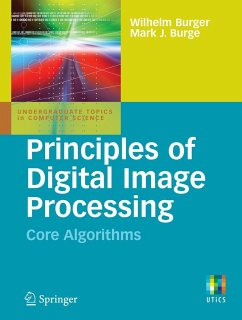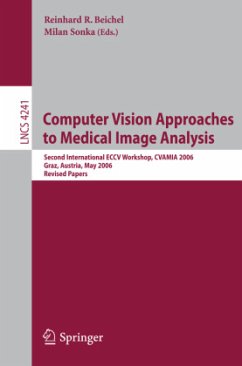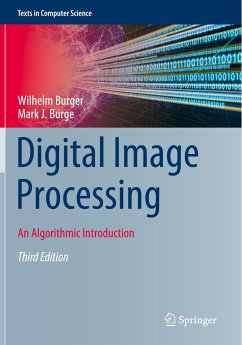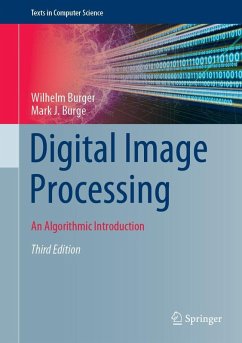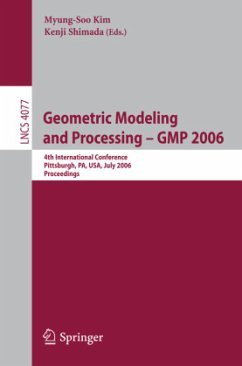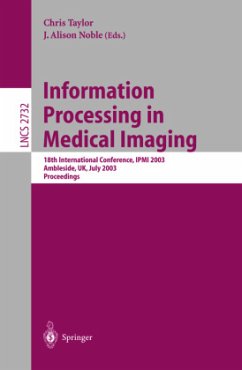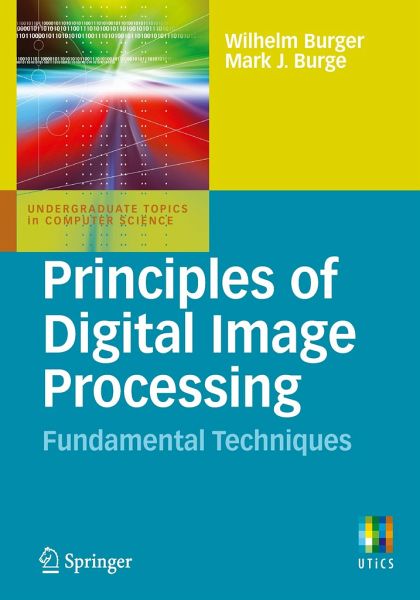
Principles of Digital Image Processing
Fundamental Techniques
Versandkostenfrei!
Versandfertig in 1-2 Wochen
29,99 €
inkl. MwSt.
Weitere Ausgaben:

PAYBACK Punkte
15 °P sammeln!
This easy-to-follow textbook provides a modern, algorithmic introduction to digital image processing, designed to be used both by learners desiring a firm foundation on which to build, and practitioners in search of critical analysis and concrete implementations of the most important techniques. The text compiles the key elements of digital image processing, starting from the basic concepts and elementary properties of digital images through simple statistics and point operations, fundamental filtering techniques, localization of edges and contours, and basic operations on color images. Master...
This easy-to-follow textbook provides a modern, algorithmic introduction to digital image processing, designed to be used both by learners desiring a firm foundation on which to build, and practitioners in search of critical analysis and concrete implementations of the most important techniques. The text compiles the key elements of digital image processing, starting from the basic concepts and elementary properties of digital images through simple statistics and point operations, fundamental filtering techniques, localization of edges and contours, and basic operations on color images. Mastering these most commonly used techniques will enable the reader to start being productive straight away.
Features and topics:
Practical examples and carefully constructed chapter-ending exercises drawn from the authors' years of experience teaching this material
Real implementations, concise mathematical notation, and precise algorithmic descriptions designed for programmers and practitioners
Easily adaptable Java code and completely worked-out examples for easy inclusion in existing (and rapid prototyping of new) applications
Uses ImageJ, the image processing system developed, maintained, and freely distributed by the U.S. National Institutes of Health (NIH)
Provides a supplementary website with the complete Java source code, test images, and corrections - www.imagingbook.com
Additional presentation tools for instructors including a complete set of figures, tables, and mathematical elements
This concise, yet comprehensive and reader-friendly text is ideal for undergraduates studying foundation courses, as well as ideal for those seeking to expand their knowledge via self-study.
Wilhelm Burger, Ph.D., is the director of the Digital Media degree programs at the UpperAustria University of Applied Sciences at Hagenberg.
Mark J. Burge, Ph.D., is a senior principal in the Center for National Security and Intelligence at Noblis in Washington, D.C.
Features and topics:
Practical examples and carefully constructed chapter-ending exercises drawn from the authors' years of experience teaching this material
Real implementations, concise mathematical notation, and precise algorithmic descriptions designed for programmers and practitioners
Easily adaptable Java code and completely worked-out examples for easy inclusion in existing (and rapid prototyping of new) applications
Uses ImageJ, the image processing system developed, maintained, and freely distributed by the U.S. National Institutes of Health (NIH)
Provides a supplementary website with the complete Java source code, test images, and corrections - www.imagingbook.com
Additional presentation tools for instructors including a complete set of figures, tables, and mathematical elements
This concise, yet comprehensive and reader-friendly text is ideal for undergraduates studying foundation courses, as well as ideal for those seeking to expand their knowledge via self-study.
Wilhelm Burger, Ph.D., is the director of the Digital Media degree programs at the UpperAustria University of Applied Sciences at Hagenberg.
Mark J. Burge, Ph.D., is a senior principal in the Center for National Security and Intelligence at Noblis in Washington, D.C.




